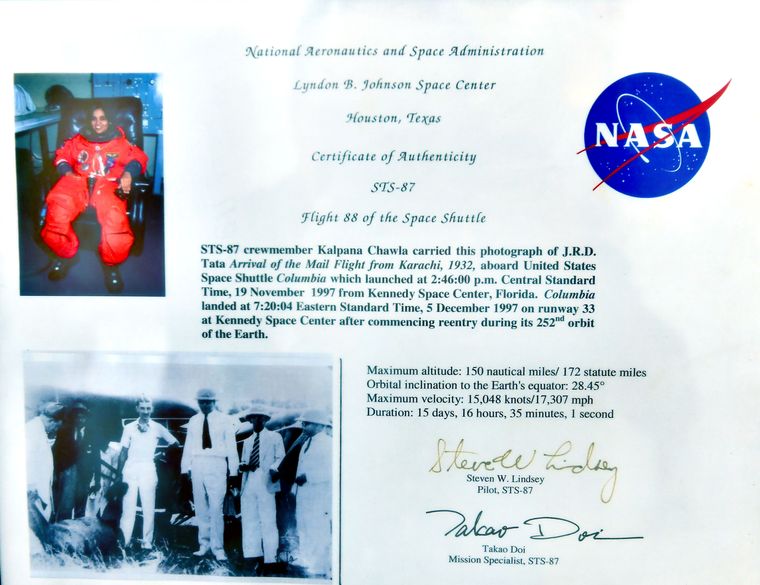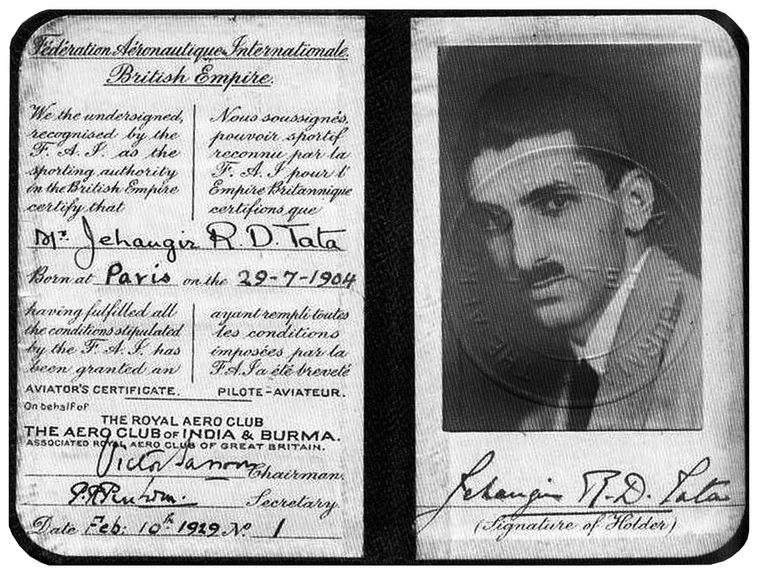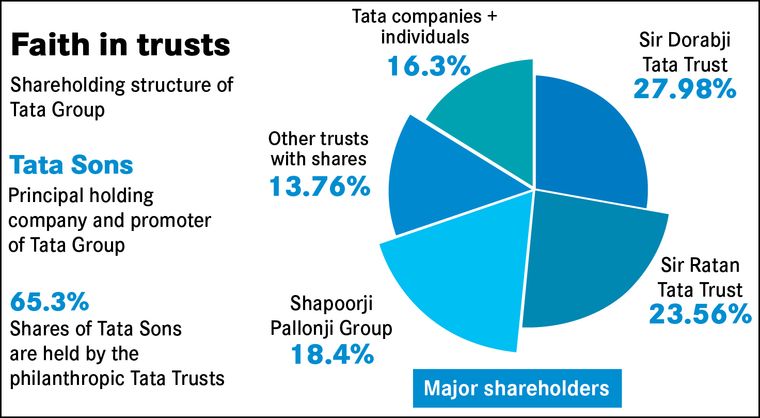IN NAVSARI, ONE of the oldest towns in Gujarat, Jimmy Darabsha Khan, 76, welcomed us to Jamsetji Tata’s birthplace. The freshly-painted bungalow in Dasturwad stands out on what can become a bustling street, depending on the time of the day. Khan, a Parsi, returned to Navsari—after working 53 years with Tata Group—to take care of the founder’s birthplace, which has been converted into a state-of-the-art museum.
Humata, Hukhta, Hvarshta (good thoughts, good words, good deeds)—a crest with this motto adorns the entrance. A bronze statue of Jamsetji greets us on entering the house. A walk around the museum not only shows the room where Jamsetji was born, but also gives detailed accounts of a life well lived and his many unimaginable journeys—seeking advice from friend Dadabhai Naoroji for raising capital for a steel company, or his meeting with Swami Vivekananda on a voyage to the US, where they exchanged views about a research university in India.
However, the Tata story, though it traces its beginnings to Navsari, can be understood in totality only in another city—Pune, the cultural capital of Maharashtra. In a leafy lane on Mangaldas Road stands the Tata Central Archives, the only green-certified archive in the world. The place attracts many visitors and research students. All new Tata employees, including Tata Administrative Services officers, are encouraged to visit at least one ongoing exhibition here. “There are many people who do not know about our company. So here, our own employees tell them about our history,” says Rajendra Prasad Narla, archivist at Tata Central Archives.
The Tata Central Archives is among the best in the world. It is “beyond world standards”, says T.R. Doongaji, honorary adviser of the archives. “If you asked me a query about the company, let us assume in those days it took ten days to find the answer. Today, I could give you an answer in five minutes, sometimes in five seconds.”
The archives was J.R.D. Tata’s idea, who was known for immaculate record-keeping. Not only did he preserve his school timetable and father’s letters, but he even maintained alphabetical indexes of his mail and a master file of important people. He kept records on most of his directors as well. Around 77,000 pages of correspondence in the archives belong to J.R.D. Tata.
Also to be found in the archives is some remarkable furniture. Dorabji Tata’s piano-like desk, for instance, automatically locks the side doors when closed.
As you pass the Rustom and Sohrab paintings, brought from the Empress Mills in Nagpur, and take the flight of stairs, you will come to the most important exhibit at the archives—J.R.D. Tata’s cabin, which has been recreated for visitors. From the transistor behind his desk and the leather stationery desk set to the crystal glassware and metal ashtrays, everything in the room is just the way it used to be when Tata worked out of it in the Bombay House. The white leather chairs, the sofa sets, the rugs, the drapes and the numerous airplane models just take you back to another era. What also has pride of place is J.R.D. Tata’s flying licence, which was India’s first.
Opposite the cabin hangs a big frame bearing a photograph of astronaut Kalpana Chawla and below it is a picture of J.R.D. Tata’s golden jubilee flight from Karachi to Bombay—at the age of 77, in 1982. The story goes that the moment he took off from Karachi his radio conked out and he said it was as good as his first flight in 1932, which had no radio. The Pakistan air force escorted him to the border, from where the Indian Air Force escorted him to Bombay. On landing, the media asked him if he was insane to do it at this age; he replied that if the act inspired even one person in the country, it was well worth it.
It certainly did. When Chawla went to space the first time, she carried in her pocket a photograph of J.R.D. Tata, who was her inspiration. NASA certified the photograph, saying that it had been in space with Chawla for 15 days, 16 hours, 35 minutes and one second. When Chawla’s mother learnt about J.R.D. Tata’s office being shifted to Pune, she had it framed with her daughter’s picture and sent it to Ratan Tata.
You have not completely seen the archives if you have not seen the basement, where everything is sealed and the temperature and humidity are controlled. It is in the ‘Record and Award’ rooms in the basement that the treasures are. Here, J.R.D. Tata’s prestigious awards—including the Bharat Ratna, the French Legion of Honour, the Daniel Guggenheim Medal and the United Nations Population Award—are kept in security safes. Also, you will find around ten lakh newspaper clippings and DVDs. “Select documents and letters are preserved and de-acidified. Important documents have been scanned so that research scholars do not have to be given the original,” says Narla.
The archives is not online in order to avoid hacking attempts. In case of a fire, a state-of-the-art fire separation system gets activated. And, in case of an earthquake? A backup of everything exists at Tata Steel in Jamshedpur.





